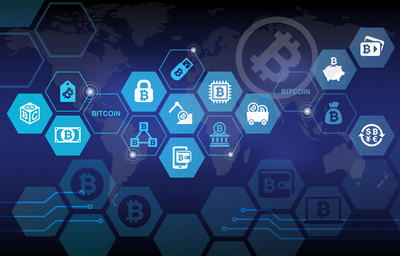Bridging
The Digital Divide: Leveraging On Artificial Intelligence In The GBS Sphere
By Dr. Thomas Tang

Introducing the thinker...AI has capabilities that could bring companies into a whole new playing field.
The emergence of what is popularly coined as Industry 4.0 is upon us. Version 4.0 of industrial advancement succeeds the three eras of steam, electrical power and automated mass production. We now face a bewildering array of technologies to run modern day businesses which include Big Data, IoT, robotics, deep learning, quantum computing and artificial intelligence (AI). Ignoring all of these runs the risk of losing markets and customers to more agile and forward-looking competitors.
Changing the way Businesses operate
The question we need to ask ourselves are what are the trends in outsourcing that we should be aware of? AI is touted as the game changer, whereby computers are no longer just manipulators of algorithms but actually possess the ability to learn from experience and cultivate sufficient ‘intelligence’ to be able to make decisions by themselves without human involvement.
Thankfully we are still a far way from the dramatic scenes of devastation depicted in popular movies like “Terminator” and“I, Robot” where the fate of mankind is determined by AI. That being said, what we do need to be wary of are the threats – and opportunities – that AI brings to the outsourcing world.
The value of transparency...blockchain systems help suppliers and customers to conduct secure transactions online through an electronic distributed ledger system.
Possibly the most prominent trend lies in how we will conduct transactions in the future. Online transactions are common enough, but with the risks of breaches of cyber security, many businesses can be exposed to cyber crime and fraud. This is where technology such as blockchain can step in as part of the solution.
Blockchain is defined as “a digital database containing information (such as records of financial transactions)that can be simultaneously used and shared within a large decentralised, publicly accessible network.”
In essence, using electronic currency, also termed as crypto currency, blockchain systems help suppliers and customers to conduct secure transactions online through an electronic distributed ledger system. Blockchain systems also serve the purpose of simplifying transactions and making all parties involved in the supply chain transparent and accountable so that the ultimate customer and supplier are inextricably connected.
On the supply side, products and services will become more accessible as data gets posted online and search engines become more powerful and intelligent. Already specialised products such as aviation parts for aircraft follow intricate supply chains to bring OEM products and services to airlines and aircraft lessors, the operators and owners of aviation assets.
Such a market is currently estimated to be over US$500 billion with over 25,000 commercial aircraft currently in existence. The corresponding market for digitisation services is worth between US$60-100 million per annum. One can extrapolate this to other industries where supply chains will no longer be the domain of a few large players but accessible to many smaller players.
Open data platforms further enable a wider selection of suppliers for customers. In the book ‘Wikinomics’, the authors correctly predicted back in 2006 that “the term ‘supply chain’ was appropriate for the old hierarchical corporation, but not for the 21st century firm…today chains are becoming value networks”.
Suppliers have become partners, often taking part in the design of products and services to enhance customer value for manufacturers and service providers.
Medicine without boundaries...tele medicine with Uber-style doctors on call is made possible with AI.
New Breed of Consumers
Through AI, customers are able to make better informed decisions with predictive logic built into systems such that they are notified when they require a particular products or services. This is essential towards maintenance of buildings and infrastructure for instance,whereby data relayed by sensors to management automatically triggers procurement requests for outstanding equipment. Customers are also invited to ‘test’ products through simulation -notably virtual and augmented reality (VR/AR) imaging – before making key purchasing decisions. Seeing is now more than believing.
It is clear from the benefits that AI will become prevalent in outsourcing. On a human scale, AI can strengthen social infrastructure through connecting the needy with care providers. An ageing population is a global crisis that is threatening most urban cities. According to the UN, the number of elderly — those aged 60 years or over — are expected to more than double by 2050 rising from 962 million globally in 2017 to 2.1 billion in 2050.
The needs of this group – healthcare,nutrition, mobility, financial – will dominate the world on a massive scale within this century. Outsourcing of services from medical to grocery shopping will be needed, and AI will play a crucial role. Examples of future services would range from the installation of chatbots for elderly customers to relay their concerns to friendly robotic carers, to tele medicine with Uber-style doctors on call. The possibilities are endless.
But having lauded the advantages, the inherent fear that AI and other automated systems will replace labour – especially outsourced services - exists. Recent research from Gartner found that by 2018, 40% of outsourced services will leverage smart machines,“rendering the offshore model obsolete for competitive advantage.”
Furthermore, Intellectual offshoring will no longer be viable, as there will be less business requirements for these services or economic incentive to move these tasks overseas as automating tasks will replace those that are currently performed by hundreds of overseas employees. Businesses would also hire more costly local talent who can focus on the difficult tasks and strategic decisions that make bigger business impacts. Virtual labour technology is estimated to offer potential cost savings of between 10-70% from current business models, so business leaders need to think about how to adopt this technology and adapt their organisations to maximise their potential in order to survive and remain competitive.
Although we are still far away from the movies where Skynet is taking over our lives, we cannot deny that intelligent machines are here. Companies that insist on relying solely on outdated offshoring models continue to do so at their peril but, crucially, could be missing out on big opportunities.
__________________________________________________________________________________
Dr Thomas S.K. Tang is currently an Advisor for Atlas Industries (Vietnam) Ltd.


